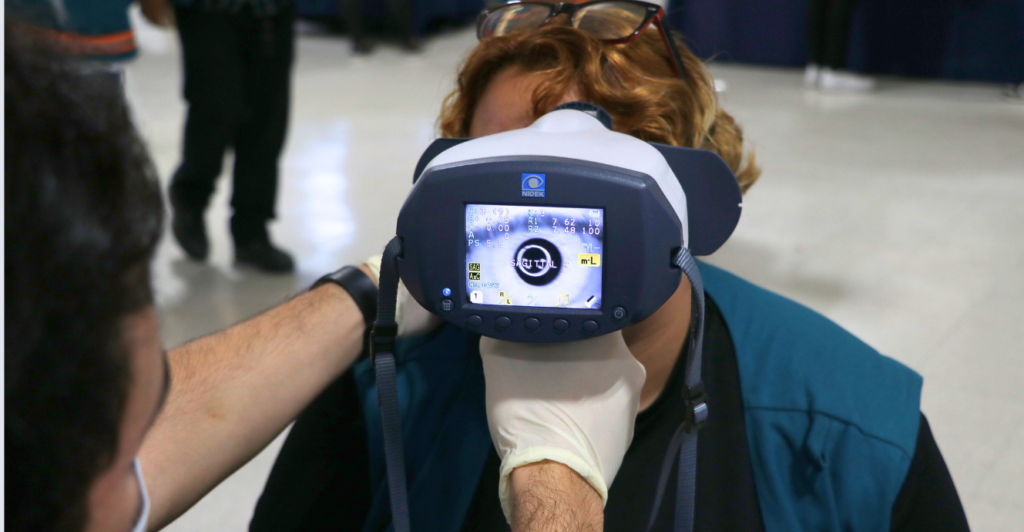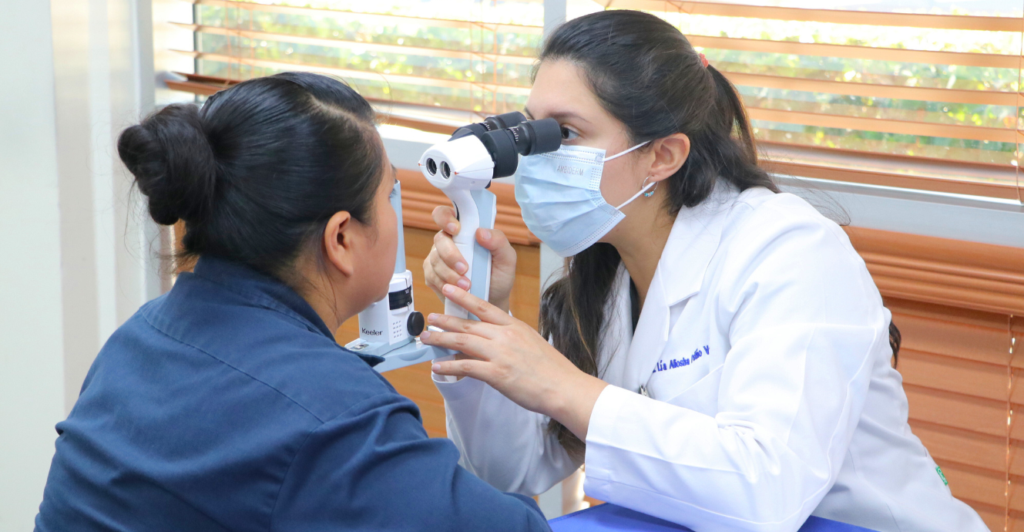March is Workplace Eye Wellness Month
Workplace Eye Health Month is a great opportunity to educate your employees on the importance of eye care. Here are key factors to consider for maintaining their visual well-being.
Workplace Eye Health Month is the perfect time to focus on protecting and maintaining good vision. Whether you spend long hours in front of a screen or work in an environment with potential eye hazards, prioritizing eye care is essential. Here are key factors to help safeguard your vision and keep your eyes healthy on the job.

Protect Your Eyes From Too Much Screen Time
The average office worker spends 1,700 hours per year in front of a computer screen. And that doesn’t include our addiction to phones and other digital devices. All this screen time has led to an increase in complaints of eye strain, dry eye, headaches and insomnia.
Why does computer use strain the eye?
Mainly because people tend to blink less while using computers. Focusing the eyes on computer screens or other digital displays has been shown to reduce a person’s blink rate by a third to a half, which tends to dry out the eyes. We also tend to view digital devices at less than ideal distances or angles. Try altering your environment with these simple tips:
- Keep your distance: The eyes actually have to work harder to see close up than far away. Try keeping the monitor or screen at arm’s length, about 25 inches away. Position the screen so your eye gaze is slightly downward.
- Reduce glare: Glass screens can produce glare that can aggravate the eye. Try using a matte screen filter.
- Adjust lighting: If a screen is much brighter than the surrounding light, your eyes have to work harder to see. Adjust your room lighting and try increasing the contrast on your screen to reduce eye strain.
- Give your eyes a break: Remember to blink. Looking into the distance allows your eyes to relax.
- Keep eyes moist: Keep artificial tears at hand to help lubricate your eyes when they feel dry. Consider using a desktop humidifier. Office buildings have humidity-controlled environments that suck moisture out of the air. In winter, heaters on high can further dry your eyes.
- Stop using devices before bed: There is evidence that blue light may affect the body’s circadian rhythm, our natural wake and sleep cycle. During the day, blue light wakes us up and stimulates us. So, too much blue light exposure late at night from your phone or other devices may make it harder to get to sleep. Limit screen time one to two hours before bedtime. Use nighttime settings on devices and computers that minimize blue light exposure.
Workplace Eye Injuries
Eye injuries at work are alarmingly common. According to the U.S. Bureau of Labor Statistics, nearly 20,000 eye injuries occur in the workplace each year and often require one or more missed work days for recovery. These injuries range from simple eye strain to severe trauma that can cause permanent eye damage or vision loss.
The most common eye injuries are caused by these workplace hazards:
- Flying shards of metal or glass
- Tools that slip or malfunction
- Particles such as wood splinters, metal shavings or crystalline silica
- Spattered chemicals
The most important thing you can do to protect your vision at work is to always wear appropriate protective eyewear. This can prevent most serious eye injuries.
Our Commitment to Workplace Eye Health
At CODET Vision Institute, we are committed to educating our patients and the community about the importance of eye health. That’s why we actively participate in and organize Health Fairs in workplace settings. Our goal is to bring essential eye care services directly to your workplace while helping employees understand the importance of protecting their vision.

Your vision is one of your most valuable assets, and taking steps to protect it in the workplace is essential. Whether it’s reducing digital eye strain, preventing injuries, or adopting healthier habits, small changes can make a big difference in maintaining long-term eye health.
By raising awareness and offering workplace eye health initiatives, we aim to help you and your team maintain clear, comfortable vision every day. Prioritize your eye health—because seeing well means working well!